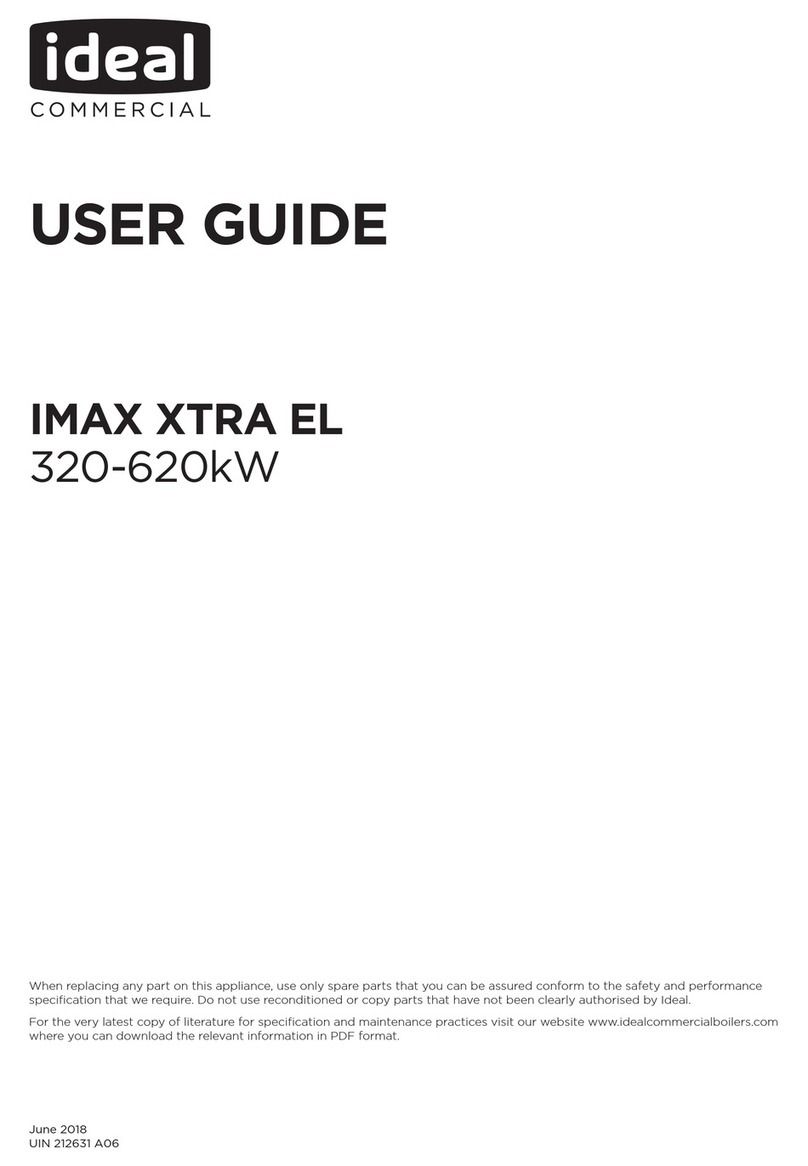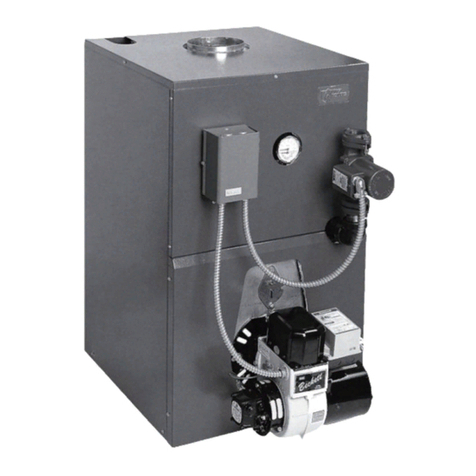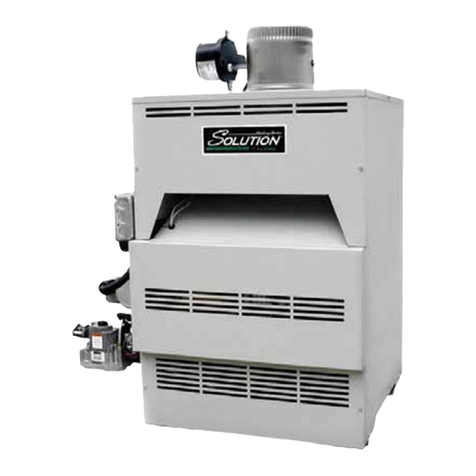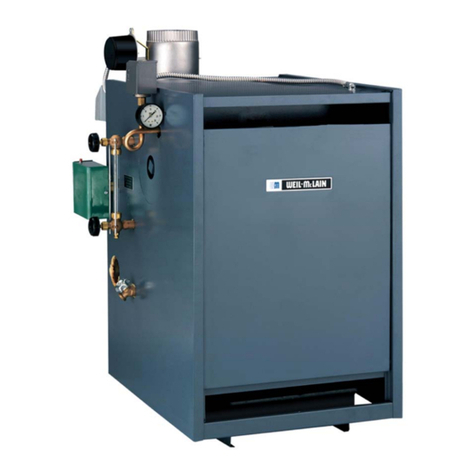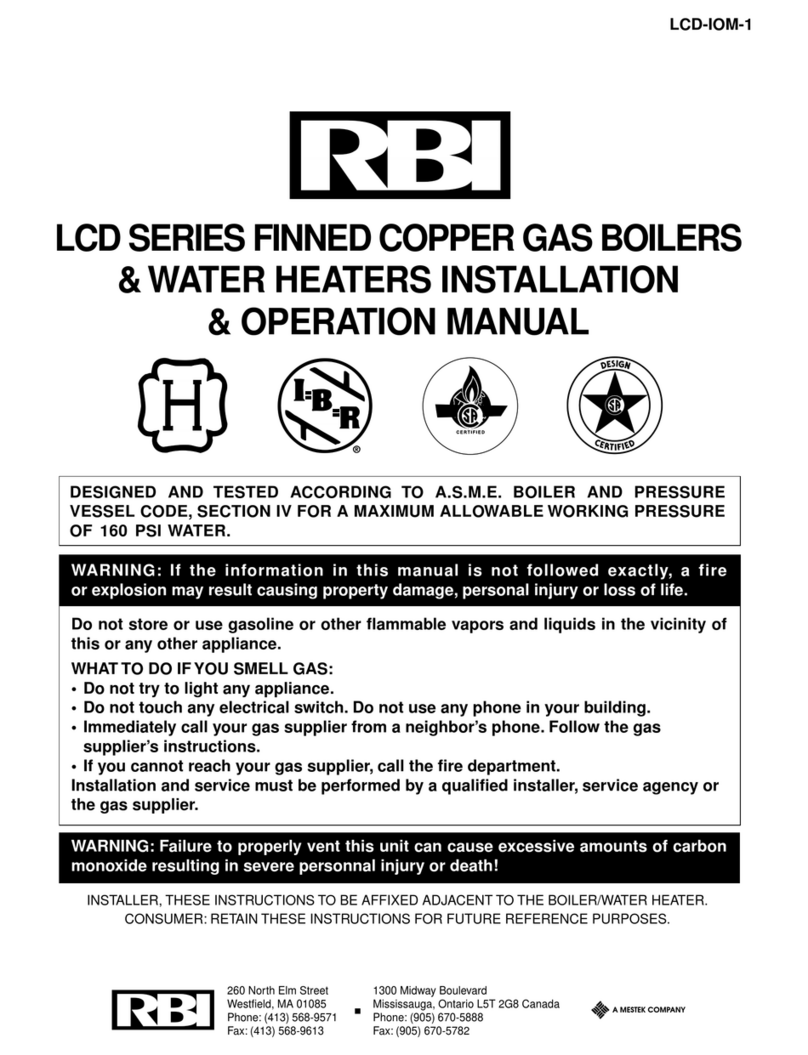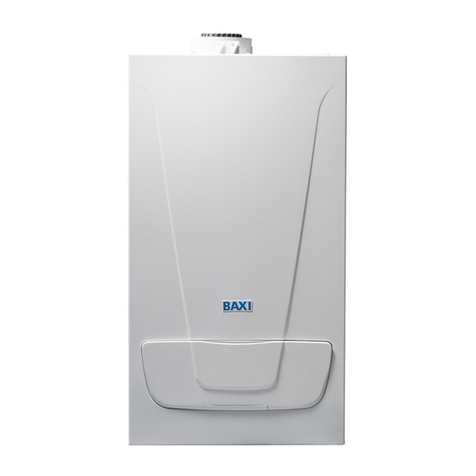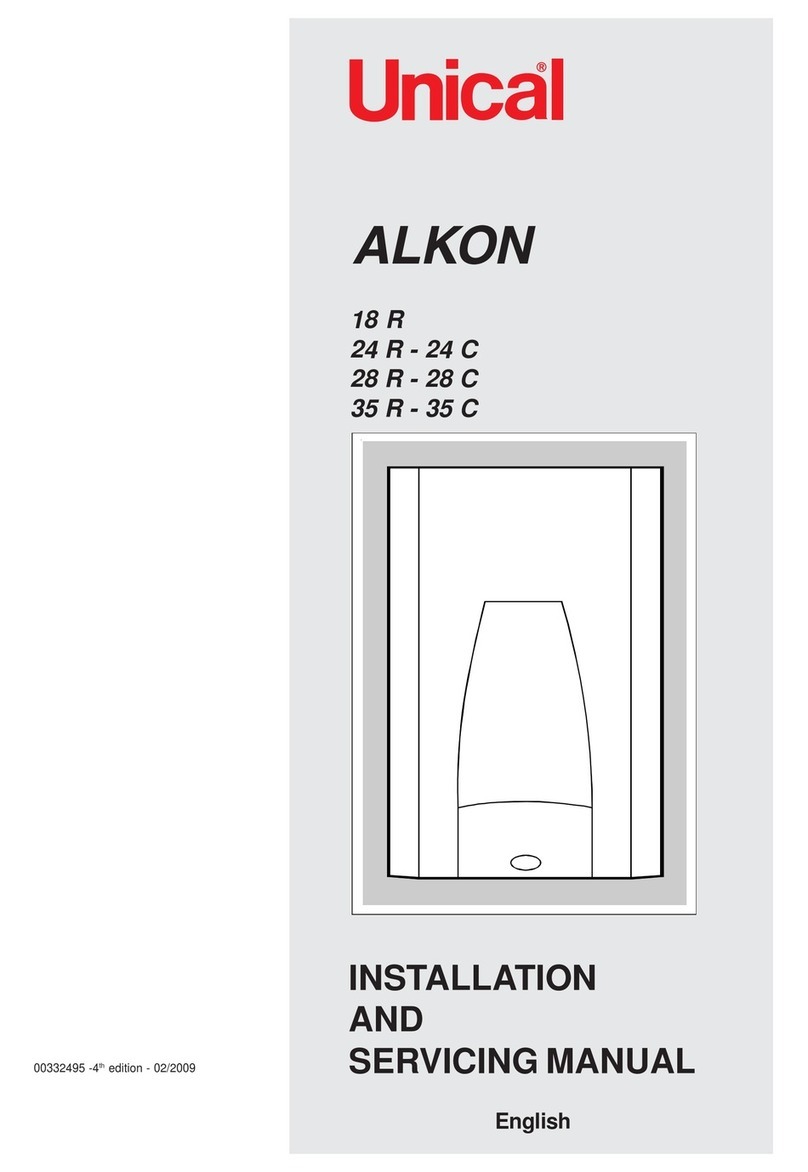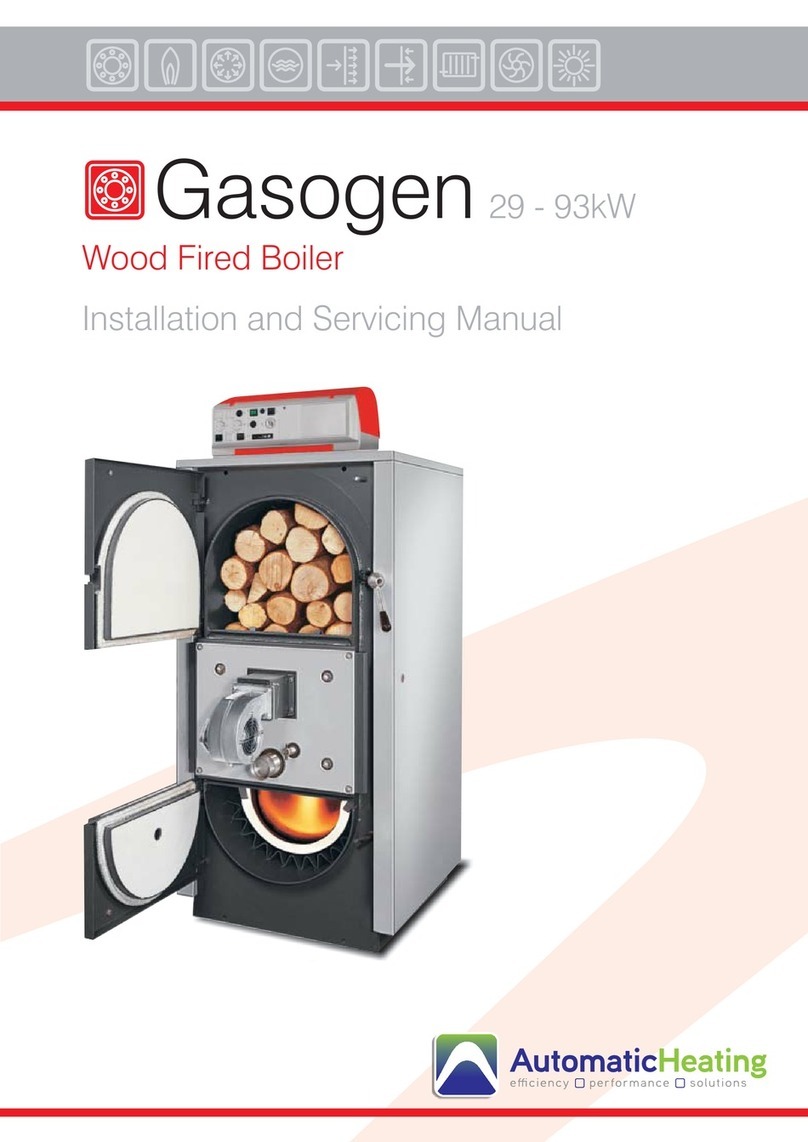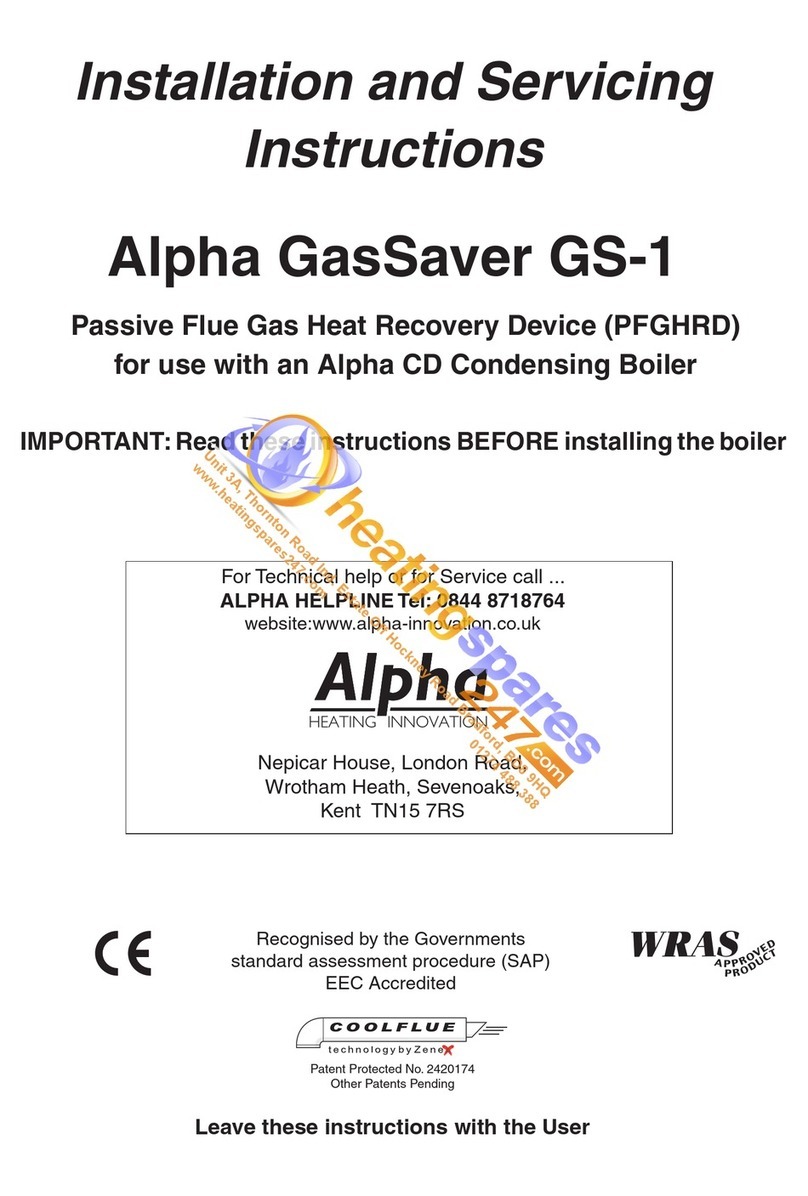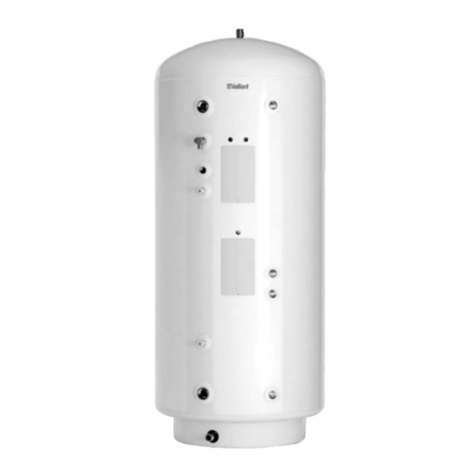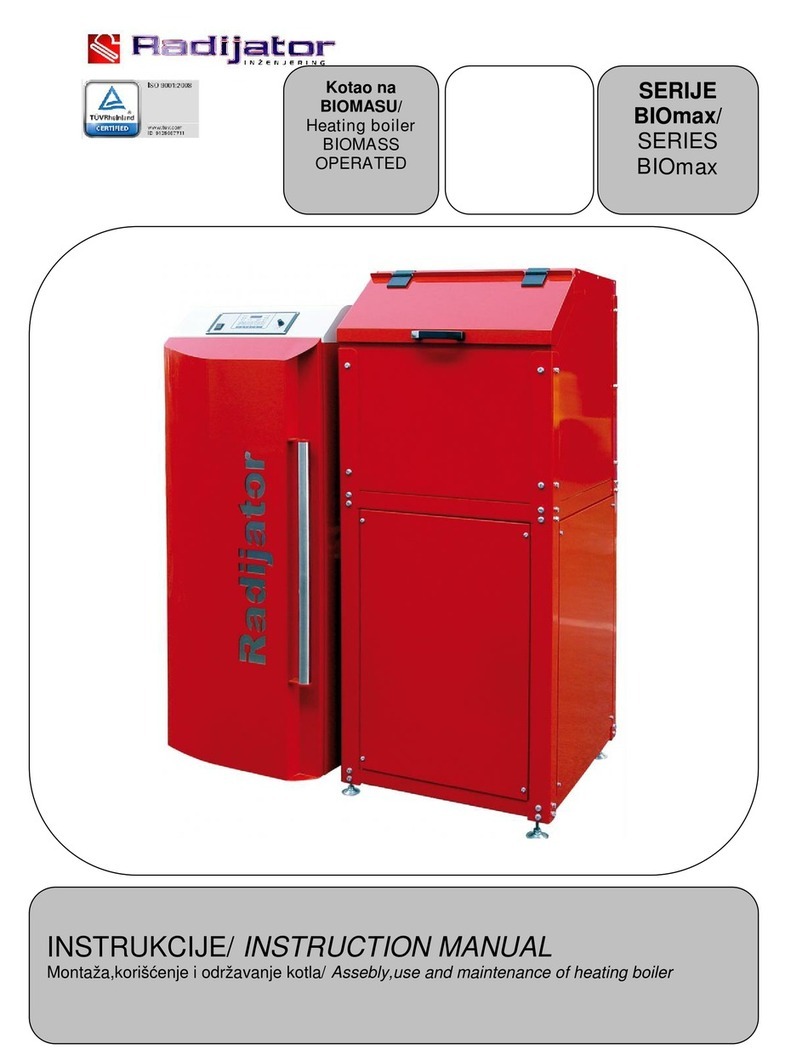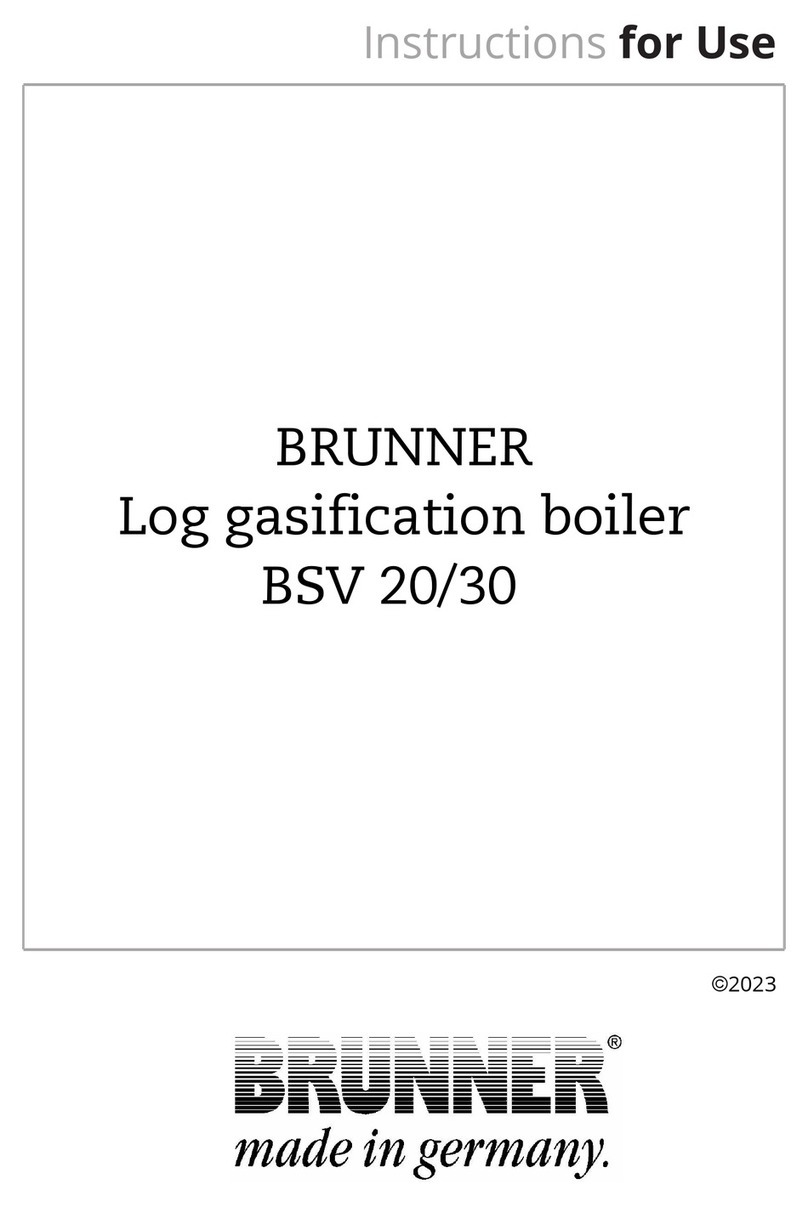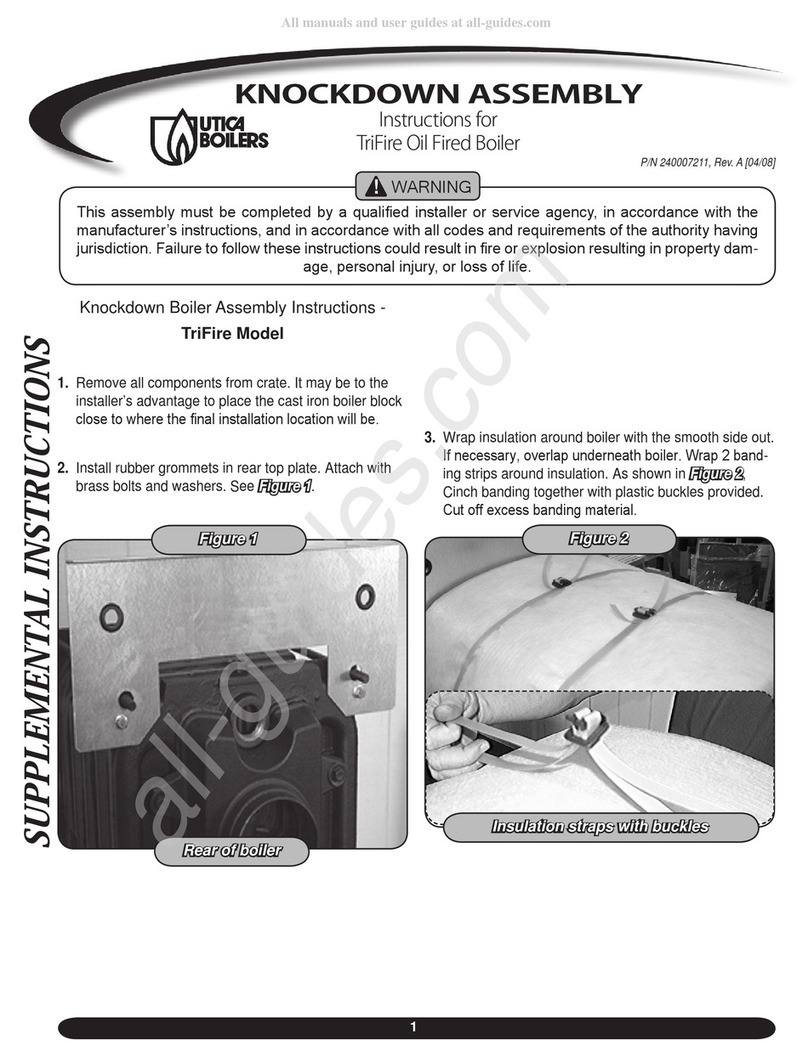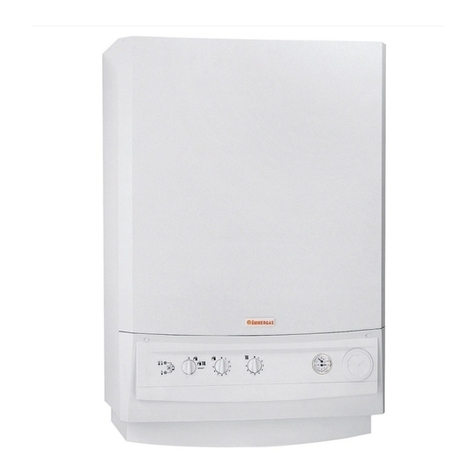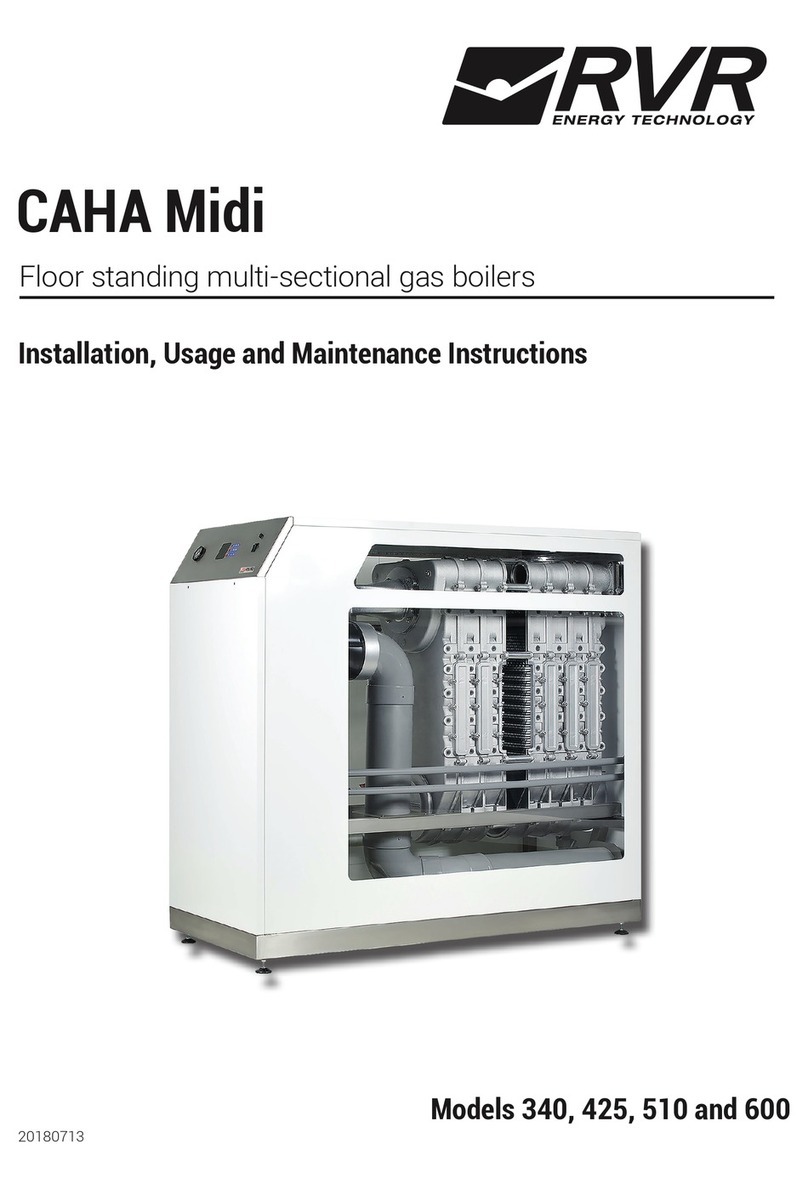
2009-03
7
RVR
Energy Technology Experts
Star NE
Control panel
After installation, check with the installer that the system is in perfect
condition. Ask the installer to demonstrate the settings and functions so
you know how to operate and care for the system.
The pressure varies with the temperature, do not add water unnecessarily.
For filling, the shunt must be fully open, position 10.
Always disconnect the power supply to the boiler before:
opening the burner hatch
draining the boiler water
accessing the automation cabinet or units powered by the boiler.
Commissioning and checks
Before putting the system into operation, check that:
- the system is filled with water.
- all connections are watertight.
- flue gas connections to the boiler and to the flue are tight.
- the filling/drain valve has been closed properly.
- the safety valves are working properly.
- the necessary valves are open.
- the circulation pump is working and the direction of flow is correct.
Water pressure in the system
The pressure in the heating system depends on the distance
between the highest and lowest points in the system, the static
head. If the difference is 5 metres, the pressure is 0.5 bar, if it is
10 metres, the pressure is 1.0 bar.
The volume of water changes with the temperature, affecting
the pressure in the heating system. Higher temperatures
increase the volume and pressure. The expansion vessel takes
up the changes in volume in the system.
Bleeding/topping up
Regularly check that there is enough water in the heating
system. The pressure gauge should indicate 0.5- 1 bar. Air may
remain in the heating system for a while after installation, so
bleeding should be repeated a few times. After bleeding, check
the pressure and add water if necessary.
Dirt filter
There is a dirt filter in the cold water pipe leading to the heat
exchanger, preventing impurities getting into the water in the
heat exchanger. If the filter becomes clogged, the pressure of
the hot water will fall. You can clean the filter – after shutting off
the water – by removing the plug next to the filter.
Circulation pump
If the boiler is shut down for a long time, there is a risk that the
heating and hot water circulation pumps might seize up. You
can prevent this by running the pumps from time to time.
THERMOSTAT MAIN SWITCH
RESET
OVERHEAT
TEMPERATURE
PRESSURE
Star
NE
Safety valves
The safety valves in the system must be operated regularly,
around four times a year, in order to preserve the safety func-
tion.
Boiler temperature
The boiler temperature should not fall below 70 °C in pellet
operation.
Pellet operation
In burner operation, the draught must be ≤0.05 mbar.
The boiler temperature is controlled by the burner thermostat – for
the various options, see the energy source selector on page 8.
For optimum reliability and efficiency, it is essential to check
and adjust the burner regularly.
Overheating protection
The boiler overheating protection is triggered when the boiler
temperature exceeds around 95 oC. The protection can be
reset on the front panel once the boiler temperature has fallen
to around 80 oC.
If there is a risk of freezing
In severe cold weather, no part of the heating system should
be turned off as this would involve a risk of burst pipes. The
boiler must not be put into operation if any part of the heating
system is suspected of being frozen. Call the installer.
If the water boils
Disconnect the power supply to the boiler, then fully open the
nearest hot water tap.
Flue cleaning
Ash and soot are formed in pellet operation, so the boiler must
be regularly cleaned, if possible when the flue gas tempera-
ture has risen by around 50 °C compared to when the boiler is
clean.
The turbulators must be checked every time the boiler is
cleaned. Damaged turbulators should be replaced. With a cor-
rectly adjusted burner, flue cleaning will not be necessary be-
tween the regular visits of the flue sweep.
Boiler cleaning
Keep the boiler clean and tidy. Alkaline cleaning agents are use-
ful for removing soot marks from the boiler.
Operation and care
1. Thermostat. Setting of boiler temperature during
burner operation. Recommended setting min 70 °C.
23. Main switch, which breaks the control current to the
boiler, as well as units powered by the boiler.
52. Resetting, overheating protection. Resetting may take
place when the boiler temperature has fallen to approx.
80 °C.
71. Thermometer, shows the boiler temperature.
72. Pressure gauge, shows the water pressure in the heat-
ing system.
123
17
71
72
